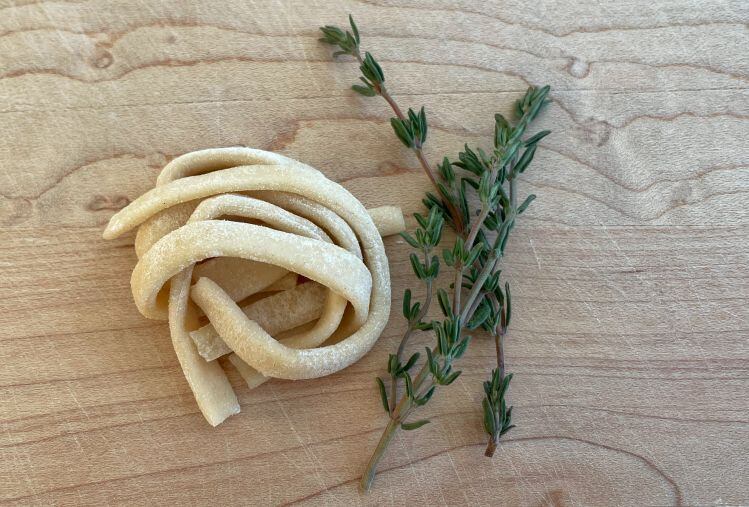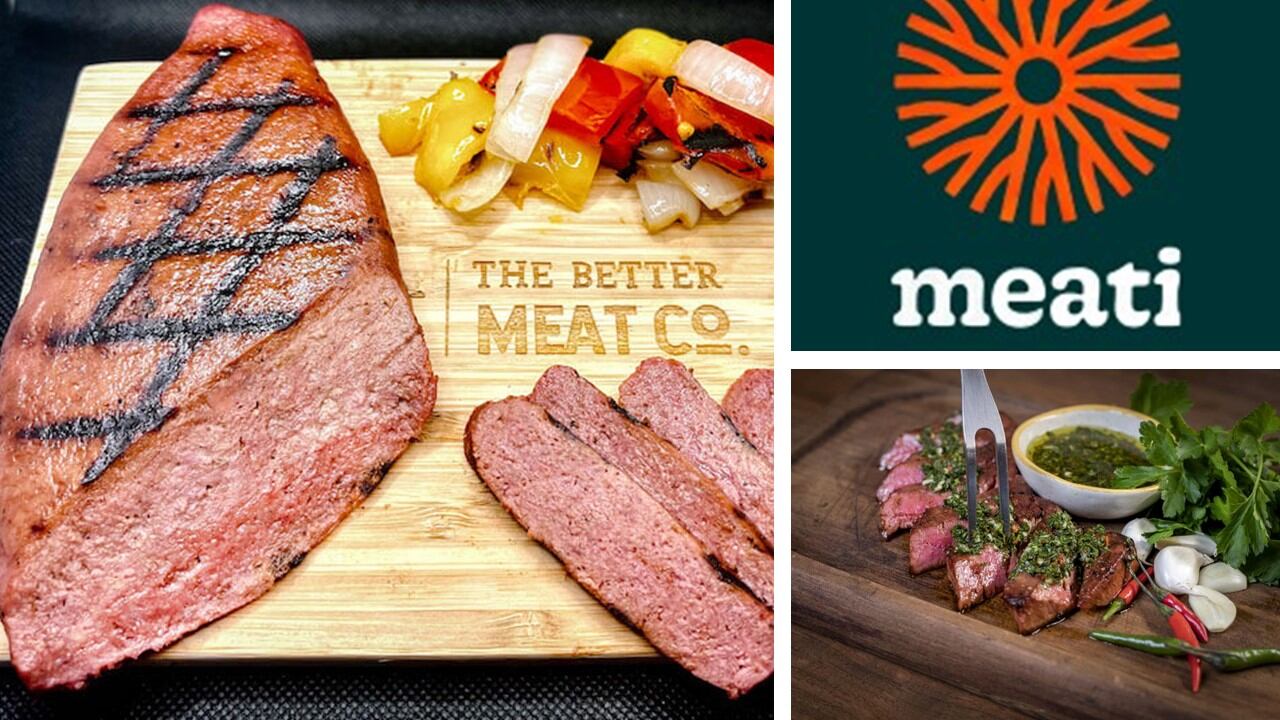Right now, says Ruiz - a former ExxonMobil chemical engineer who teamed up with LanzaTech biochemist and patent agent Andrea Schoen last year to make high-protein gluten-free ‘flour’ from mycelium-fed sugary waste water - firms are typically feeding their microbes purified sugars such as dextrose from food crops such as corn, which come with their own environmental and economic costs.
As a result, explains Ruiz, the race is on to find a cheaper and more sustainable approach, from valorizing industrial and agricultural waste streams; to extracting cellulosic sugars from non-food crops; to finding microbes that can sidestep sugars altogether and convert carbon in air into protein instead (Air Protein, Solar Foods).
'What’s my purpose in life? Not to make ExxonMobil any more money...'
For Ruiz, who is adopting the first approach (valorizing industrial and agricultural waste streams) her career pivot from the oil industry to food was prompted less by an ‘a-ha’ moment than a dawning realization that her skills could be put to better use.
“I was running a wastewater treatment plant using bacteria and fungi to eat the organic stuff that's in there. That’s how you clean water. These microbes grew like crazy, so we would throw the biomass in the landfill, thousands of pounds a day. Do you know how much methane we were producing?
“What’s my purpose in life? Not to make ExxonMobil any more money. And I started to think, wait a minute… This site is a fraction of the size of some of the food manufacturers, so think of all the wastewater [packed with sugars ideal for feeding hungry microbes] that they produce.
“We have millions of gallons of basically sugar water that brewers or wet corn millers produce as waste water, and they have to pay surcharges to handle it because it’s so rich in sugar,” adds Ruiz. “So I thought why can’t we use that?”
'Do you know how much methane we were producing?'
The food system accounts for 70% of all freshwater use, says Ruiz, who has just raised $2m in a pre-seed round* led by The Engine, a venture firm spun out of MIT.
If you can use upcycled water feedstocks you can reduce the water intensity of fermentation but also divert these feedstocks from wastewater treatment facilities, which generate significant amounts of methane, she adds.
But if this is so obvious, why isn’t everyone in the burgeoning microbial fermentation space doing this?
“It's a couple of different things, but for many firms in this space, it’s a question of which technical challenge do you want to overcome first,” she claims.
“I'm a chemical engineer who happened to work in wastewater treatment, so I know there are certain streams of wastewater that are not gross; they're not contaminated, they’re pure gold. But you have to know what you're doing and there are lots of barriers to entry, so I can see why firms [pioneering work in microbial fermentation for food] said [in the first instance] we’ll start with just buying raw sugar [and then down the road explore other sources of glucose].”
As for IP, she says: “For us, the differentiation very much leans heavily into the valorization and pre-treatment phase of this entire bioprocess.
"What is interesting about the pretreatment is that it can be done continuously, but I won't be able to share too much about ours at this time. The pretreatment train is designed to maintain the exact same conditions for feed entering the fermenter, so the fungi have stable growth conditions."

'If you wanted to make pesto pasta, you don't need to add chicken because it has as much protein as a piece of chicken with one bowl'
So what kind of food production facilities generate the kind of consistent sugary waste water that could fuel Hyfé Foods' fermentation process?
“Wet corn millers, industrial breweries and canning factories have a pretty nice amount of water,” says Ruiz. “And anybody who's blanching vegetables is really just boiling them, and so that's nutrient rich water that can be used. We won't be supplementing with more sugar because these streams are very concentrated. That's why I think they are just a missed opportunity."
Asked about the microorganism that Hyfé Foods is working with to make its ‘flour,’ Ruiz stresses that it is “100% different” from the fungi strain commercialized by Meati Foods as a meat alternative, and has a fairly “neutral taste” although she is “striving to make it not taste like anything at all.”
“We don't want a filamentous, meaty-like product. We have [got a product with] about 50-60% protein and 25% fiber, but we’re still working on it, so I can’t say what the exact nutritional composition is, but our focus is on flour that people can use as a drop-in replacement for wheat flour without the refined carbs.
“It also happens to be super high in protein and so if you wanted to make pesto pasta, you don't need to add chicken because it has as much protein as a piece of chicken with one bowl.”
Will consumers eat 'mycelium flour?'
Asked how confident she is that there is a market for ‘mycelium flour,’ which is not something most consumers will recognize, and will not likely have the same properties as wheat flour in every application, she says:
“I think there's a really beautiful story we can tell about fungi being there ever since the beginning of time, so that’s the storytelling we’ll likely be leaning into. I also think we can [use the term] ‘mycelium.’
That said, it’s very early days for Hyfé Foods, acknowledges Ruiz, who says the ultimate plan is to sell both “flour and formulated flour products to CPG companies, restaurants and ready made meal companies.
“How do we process the mycelium so it remains minimally processed, but also meets the goal of looking just like flour? It’s also part of our development plan to work on the drying and deactivation process without using heat.
“We're hiring a fermentation scientist and a process engineer, and we’re working with Argonne National Laboratory [a Dept of Energy multidisciplinary science and engineering research center neat Chicago], to get to pilot scale as fast as possible.”
*Other investors participating in the pre-seed round include: Blue Horizon, Caffeinated Capital, Supply Change Capital, Lifely, Gaingels, Hack Ventures, and angel investors including restaurateurs and founders. Hyfé was also awarded a Dept of Energy grant through the Chain Reaction Innovations accelerator at Argonne National Labs.




